Abstract
Amide and ureide biogenic enzymes were measured in the plant fraction of soybean (Glycine max) nodules during the period 11 to 23 days after inoculation with Rhizobium japonicum (USDA 3I1b142). Enzymes involved in the initial assimilation of ammonia, i.e. glutamine synthetase, glutamate synthase, and aspartate aminotransferase, showed substantial increases in their specific activities over the time course. These increases paralleled the induction of nitrogenase activity in the bacteroid and leghemoglobin synthesis in the plant fraction. The specific activity of asparagine synthetase, however, showed a rapid decline after an initial increase in specific activity. Following the initial increases in the ammonia assimilatory enzymes, there was an increase in the activity of 5-phosphoribosylpyrophosphate amidotransferase, the enzyme which catalyzes the first committed step of de novo purine biosynthesis. This was followed by a dramatic increase in the purine oxidative enzymes, xanthine dehydrogenase and uricase. Smaller increases were observed in the activities of enzymes associated with the supply of metabolites to the purine biosynthetic pathway: phosphoglycerate dehydrogenase, serine hydroxymethylase, and methylene tetrahydrofolate dehydrogenase.
The concentration of asparagine in the plant fraction decreased at the same time as the observed decrease in asparagine synthetase activity. This was followed by a recovery in plant fraction levels of asparagine in the presence of a continuing fall in the glutamine concentration and continued low asparagine synthetase activity.
The data presented are consistent with initial assimilation of ammonia into glutamine and aspartate, which are metabolized by an elevation of endogenous purine biosynthetic enzymes, and then, by the induction of a specific group of purine oxidative enzymes, directed to allantoic acid production.
Full text
PDF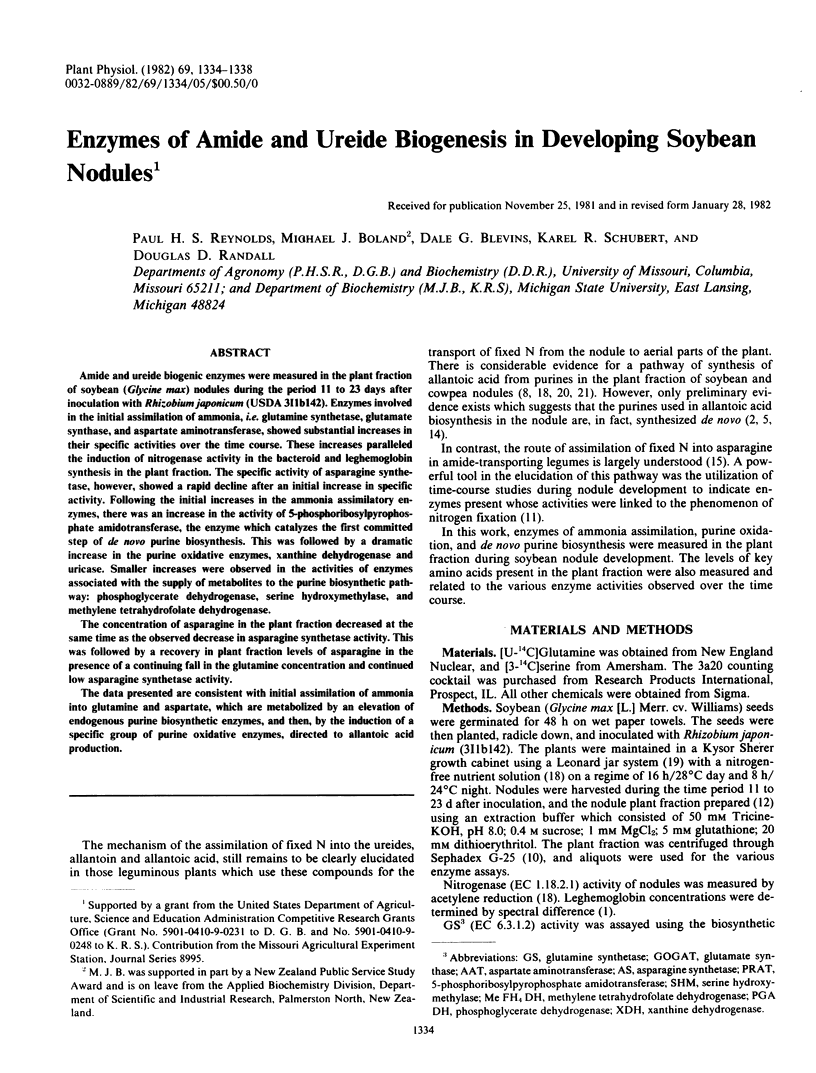
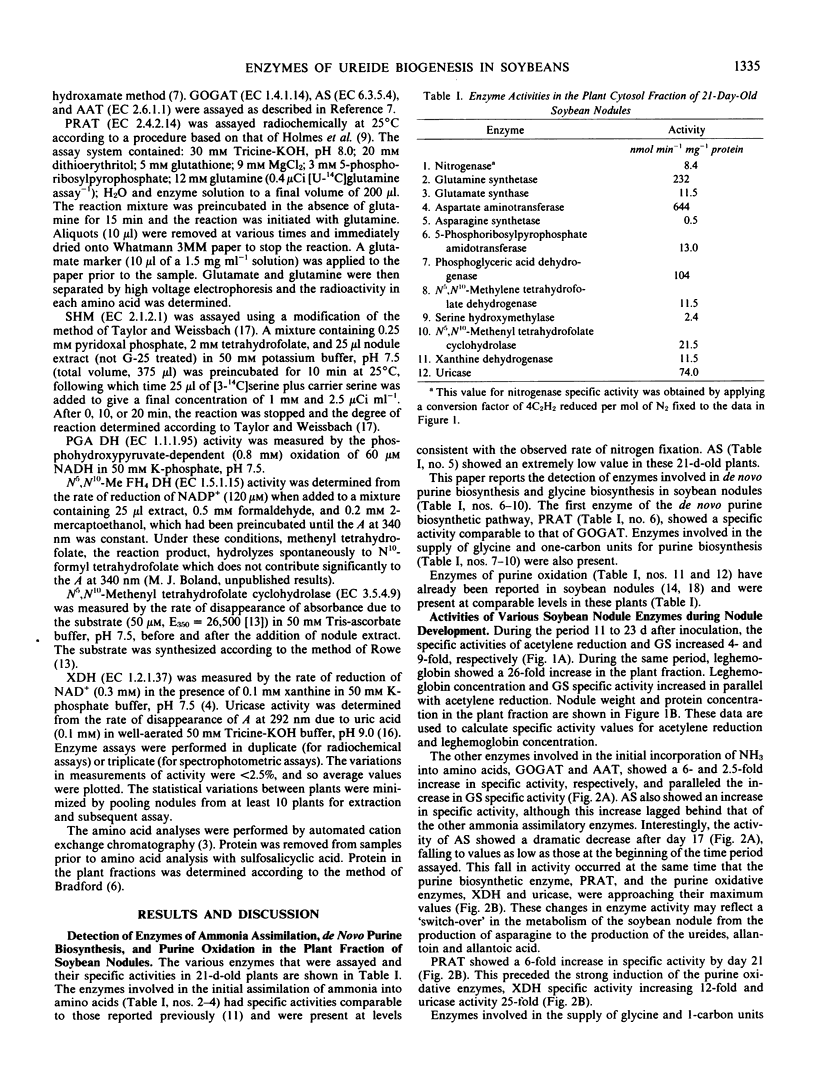
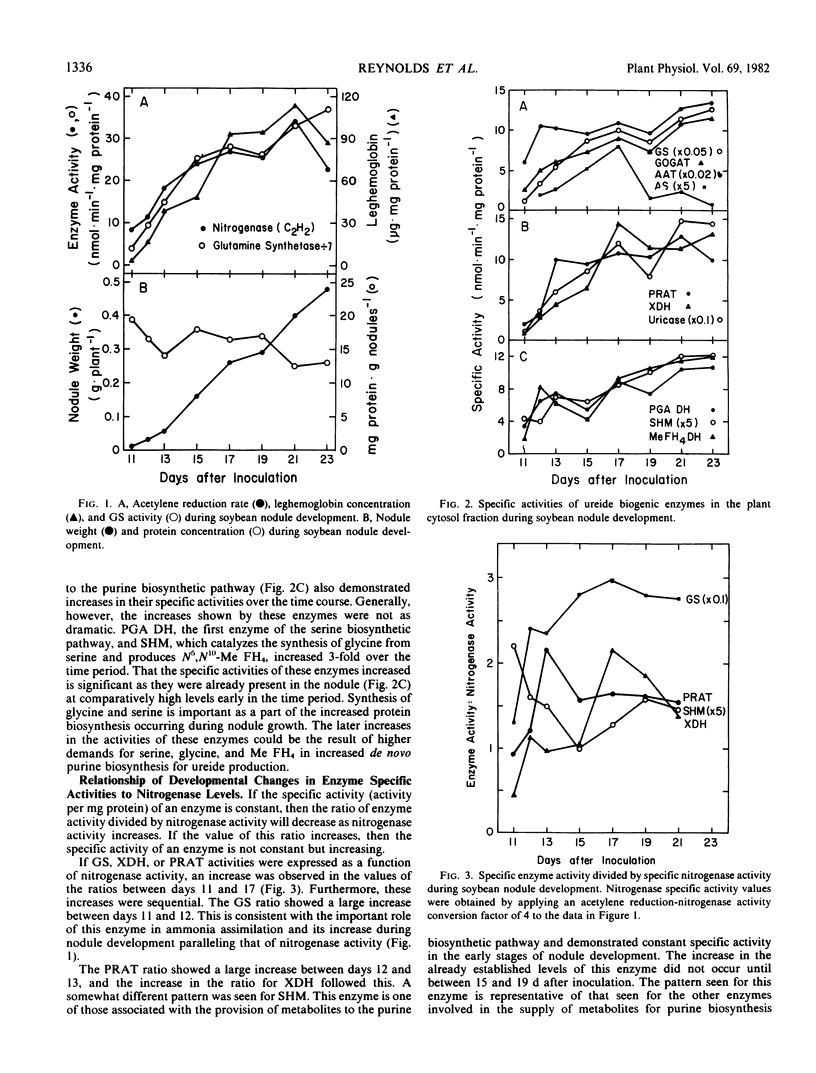
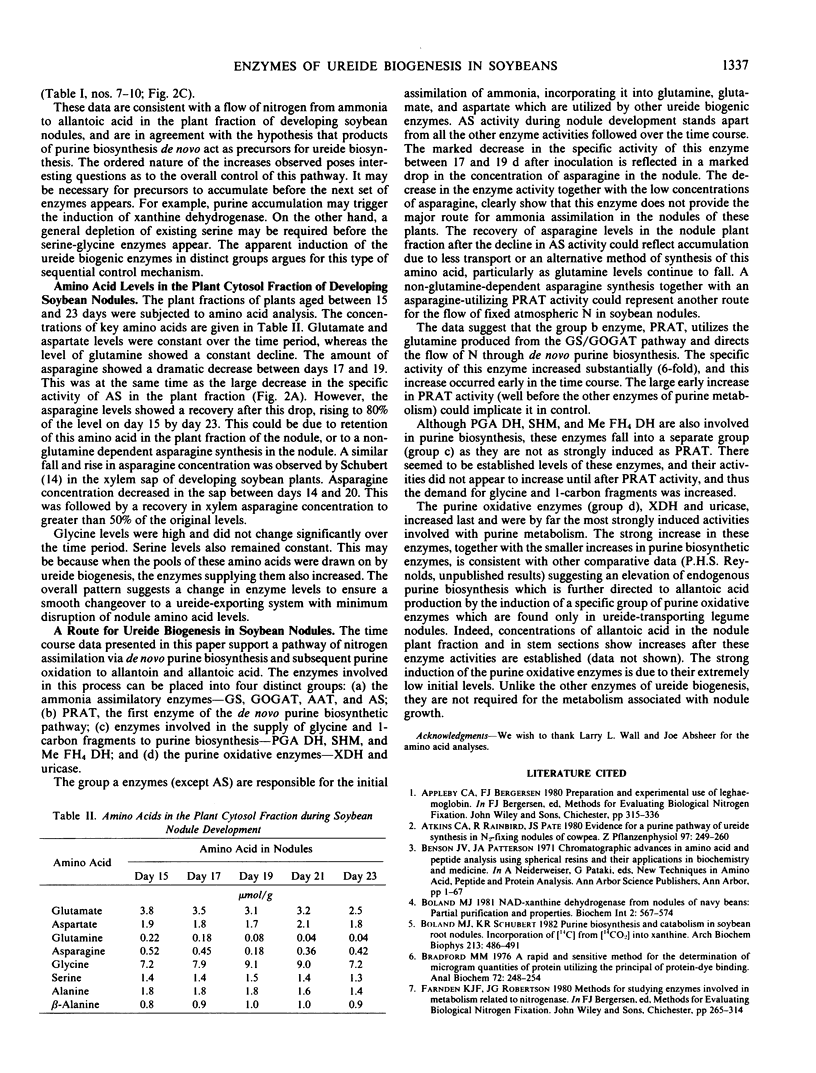
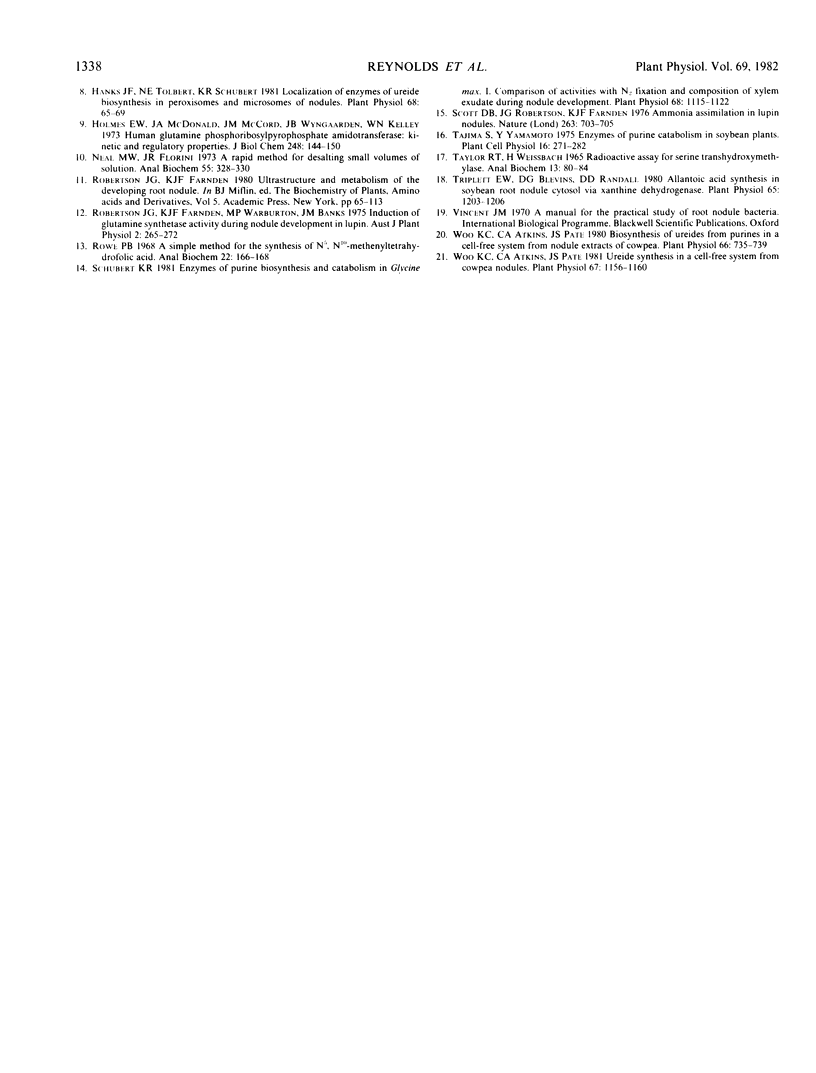
Selected References
These references are in PubMed. This may not be the complete list of references from this article.
- Bradford M. M. A rapid and sensitive method for the quantitation of microgram quantities of protein utilizing the principle of protein-dye binding. Anal Biochem. 1976 May 7;72:248–254. doi: 10.1006/abio.1976.9999. [DOI] [PubMed] [Google Scholar]
- Hanks J. F., Tolbert N. E., Schubert K. R. Localization of enzymes of ureide biosynthesis in peroxisomes and microsomes of nodules. Plant Physiol. 1981 Jul;68(1):65–69. doi: 10.1104/pp.68.1.65. [DOI] [PMC free article] [PubMed] [Google Scholar]
- Holmes E. W., McDonald J. A., McCord J. M., Wyngaarden J. B., Kelley W. N. Human glutamine phosphoribosylpyrophosphate amidotransferase. Kinetic and regulatory properties. J Biol Chem. 1973 Jan 10;248(1):144–150. [PubMed] [Google Scholar]
- Neal M. W., Florini J. R. A rapid method for desalting small volumes of solution. Anal Biochem. 1973 Sep;55(1):328–330. doi: 10.1016/0003-2697(73)90325-4. [DOI] [PubMed] [Google Scholar]
- Rowe P. B. A simple method for the synthesis of N5,N10-methenyltetrahydrofolic acid. Anal Biochem. 1968 Jan;22(1):166–168. doi: 10.1016/0003-2697(68)90271-6. [DOI] [PubMed] [Google Scholar]
- Schubert K. R. Enzymes of Purine Biosynthesis and Catabolism in Glycine max: I. COMPARISON OF ACTIVITIES WITH N(2) FIXATION AND COMPOSITION OF XYLEM EXUDATE DURING NODULE DEVELOPMENT. Plant Physiol. 1981 Nov;68(5):1115–1122. doi: 10.1104/pp.68.5.1115. [DOI] [PMC free article] [PubMed] [Google Scholar]
- Triplett E. W., Blevins D. G., Randall D. D. Allantoic Acid Synthesis in Soybean Root Nodule Cytosol via Xanthine Dehydrogenase. Plant Physiol. 1980 Jun;65(6):1203–1206. doi: 10.1104/pp.65.6.1203. [DOI] [PMC free article] [PubMed] [Google Scholar]
- Woo K. C., Atkins C. A., Pate J. S. Biosynthesis of Ureides from Purines in a Cell-free System from Nodule Extracts of Cowpea [Vigna unguiculata (L) Walp.]. Plant Physiol. 1980 Oct;66(4):735–739. doi: 10.1104/pp.66.4.735. [DOI] [PMC free article] [PubMed] [Google Scholar]
- Woo K. C. Ureide Synthesis in a Cell-Free System from Cowpea (Vigna unguiculata [L.] Walp.) Nodules : STUDIES WITH O(2), pH, AND PURINE METABOLITES. Plant Physiol. 1981 Jun;67(6):1156–1160. doi: 10.1104/pp.67.6.1156. [DOI] [PMC free article] [PubMed] [Google Scholar]


